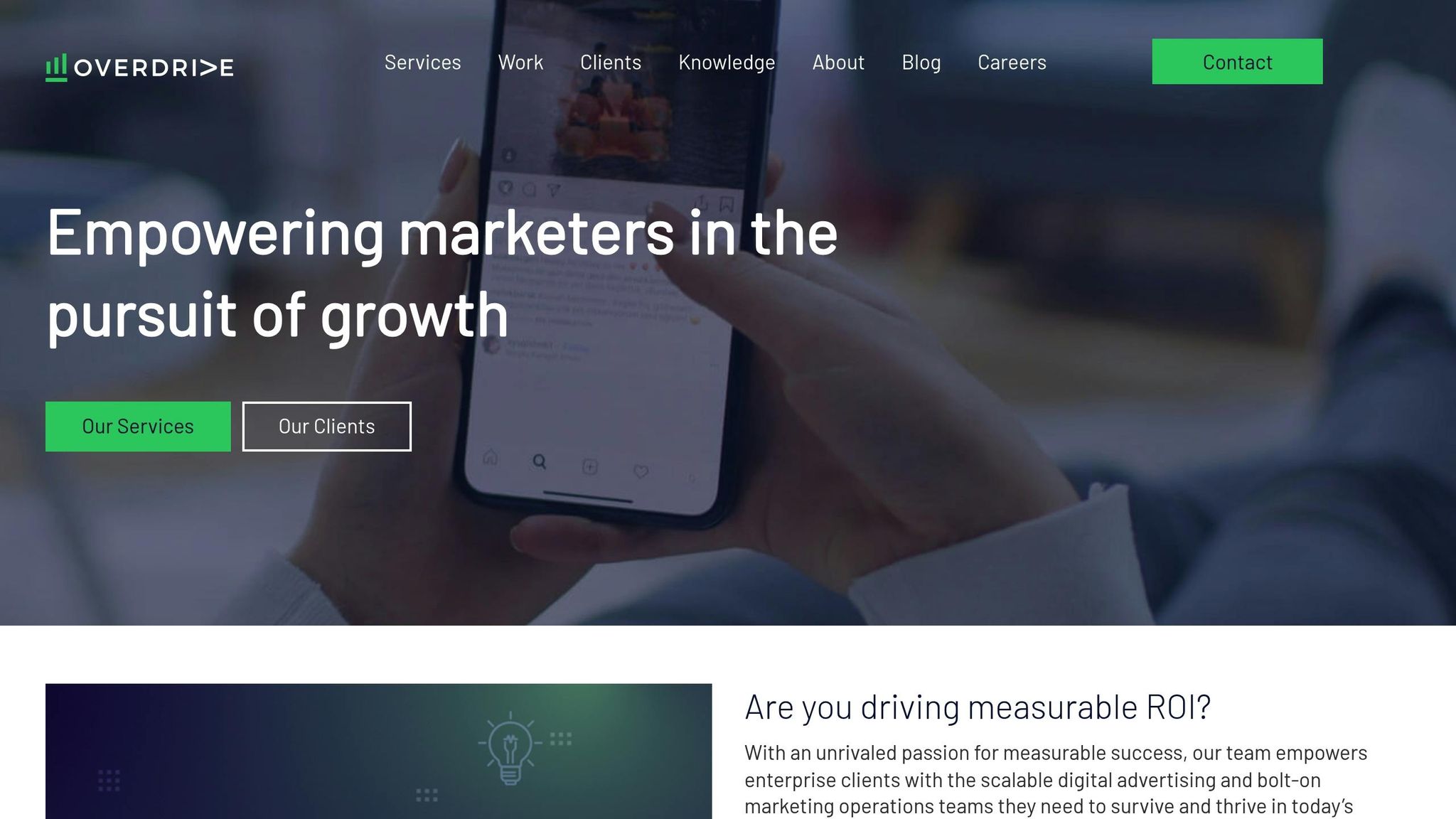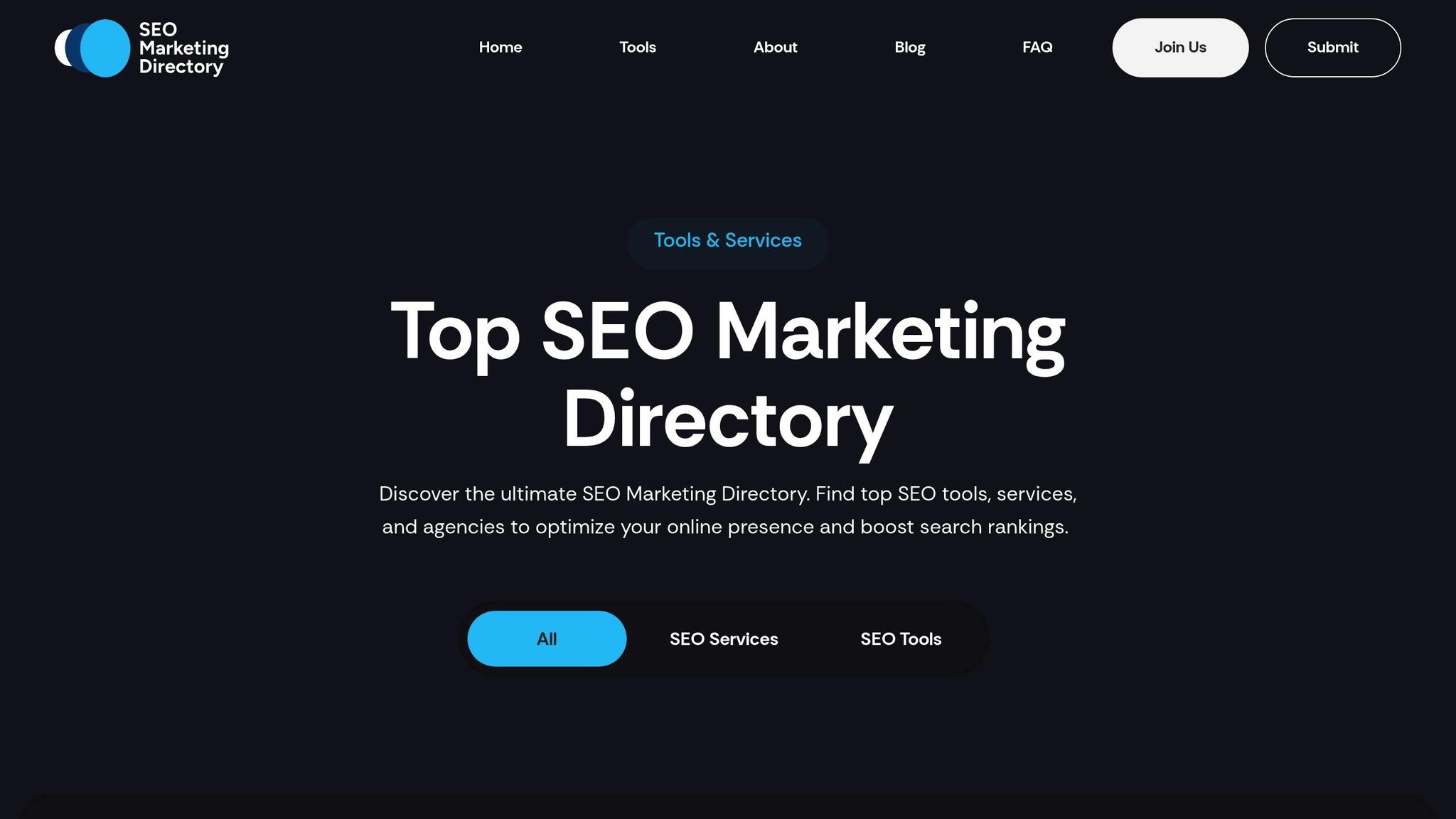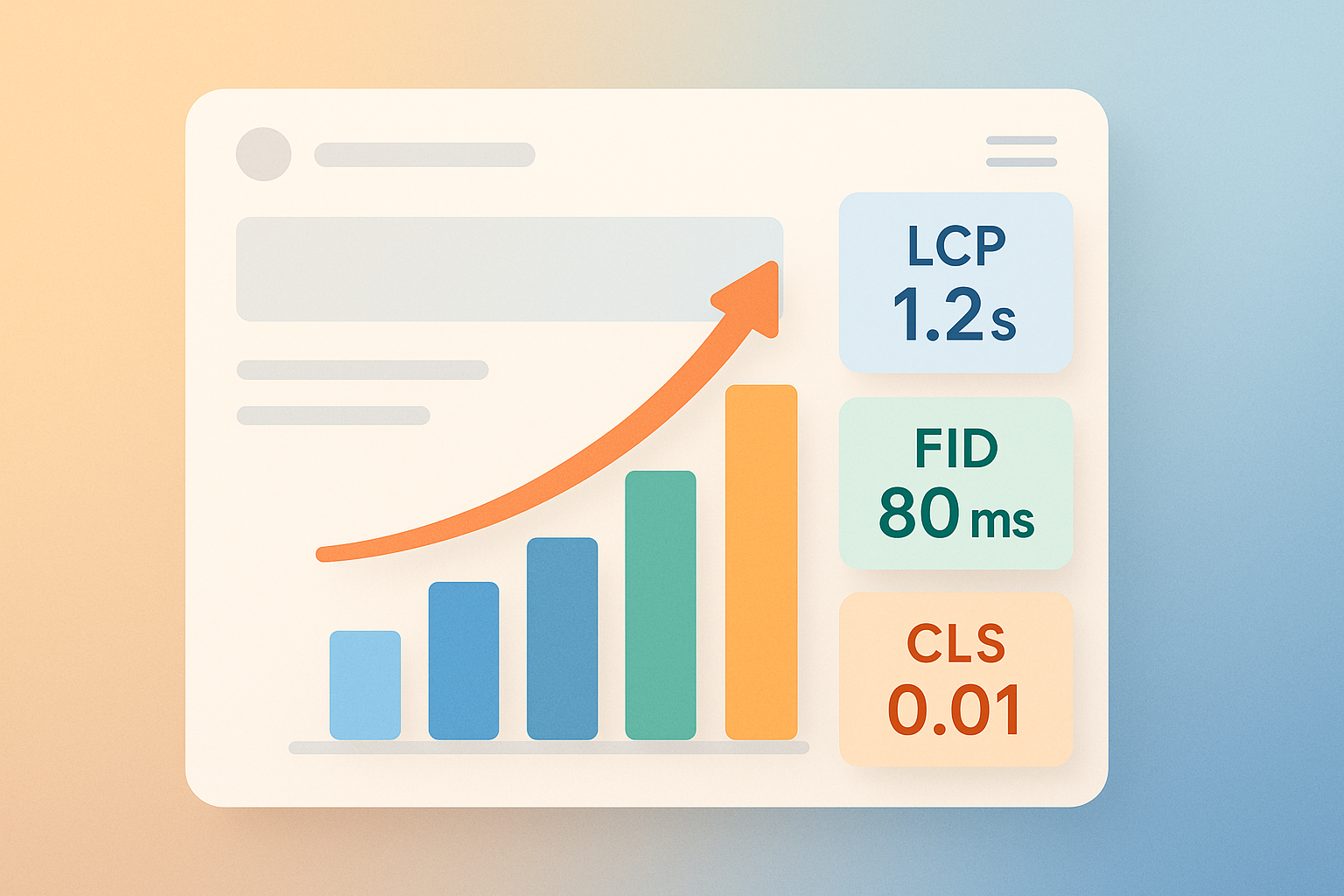Want to track your B2B SEO performance effectively? Start with a dashboard that simplifies data and highlights what matters most.
B2B SEO dashboards help businesses monitor long sales cycles, analyze buyer behavior, and track key performance indicators (KPIs) like organic traffic, lead quality, and conversion rates. Here's what you need to know:
- Key Metrics to Track: Focus on traffic, lead conversion rates, keyword performance, and technical SEO health.
- Content Insights: Measure the performance of white papers, case studies, blog posts, and product pages.
- Tools to Use: Choose platforms that integrate Google Analytics, Search Console, and CRM systems for automated, real-time updates.
- Visualization Tips: Use clear visuals like scorecards and charts to make data actionable for different teams.
Ultimate SEO Dashboard for CMOs Webinar by Overdrive ...

Must-Have B2B SEO Dashboard Metrics
Once your dashboard is set up, it's time to focus on the metrics that truly matter. A B2B SEO dashboard should track data that aligns with your business objectives and helps guide decisions.
Traffic and Lead Metrics
Keep an eye on both the volume of traffic and the quality of your visitors:
| Metric | Description | Target Range |
|---|---|---|
| Organic Sessions | Monthly visitors from search engines | 10,000+ |
| Lead Conversion Rate | Percentage of visitors converting to leads | 2-5% |
| Lead Quality Score | Lead fit rating (scale of 1-100) | 70+ |
| Time to Conversion | Days from first visit to lead conversion | 30-90 days |
Additionally, monitoring keyword performance can help you assess how well you're connecting with potential customers.
Keyword Performance Tracking
Evaluate how keywords perform across different stages of the buying process:
| Keyword Type | Metrics to Track | Importance |
|---|---|---|
| Product Terms | Position, CTR (Click-Through Rate), Conversion Rate | High |
| Industry Terms | Rankings, Featured Snippets | Medium |
| Problem-Based | Search Volume, Position Changes | Medium |
| Competitor | Share of Voice, Position | Low |
Technical SEO Metrics
Technical performance is the backbone of a strong SEO strategy. Regularly review these metrics:
| Technical Metric | Benchmark | Monitoring Frequency |
|---|---|---|
| Page Load Speed | Under 3 seconds | Weekly |
| Mobile Score | Above 90/100 | Monthly |
| Crawl Errors | Less than 1% of pages | Weekly |
| Core Web Vitals | All ratings should be "Good" | Monthly |
Use tools like Google Search Console and PageSpeed Insights to monitor these metrics. Address any issues as soon as they arise to maintain optimal site performance.
Content Performance Data
Content is key to engaging your audience and driving conversions. Track performance by content type:
| Content Type | Key Metrics | Target Goals |
|---|---|---|
| Product Pages | Time on Page (3+ minutes), Demo Requests | 5%+ conversion rate |
| Blog Posts | Organic Traffic, Social Shares | 1,000+ monthly views |
| Case Studies | Downloads, Lead Quality | 50+ monthly leads |
| Resource Hub | Return Visits, Time on Site | 8+ minutes per session |
Focus on metrics that show how well your content resonates with your audience and contributes to conversions. These insights will help you fine-tune your SEO strategy for better results.
Selecting B2B SEO Dashboard Tools
Top Dashboard Tools Overview
When choosing dashboard tools for B2B SEO, look for options that centralize key data and streamline your workflow. The best tools should include features like keyword tracking, technical SEO monitoring, and competitor analysis.
| Feature Category | Key Capabilities | Benefit to Reporting |
|---|---|---|
| Keyword Analysis | SERP tracking, position monitoring, search intent insights | Tracks ranking progress and content performance |
| Technical SEO | Site audits, Core Web Vitals tracking, crawl error detection | Provides visibility into technical health |
| Content Performance | AI-based suggestions, content gap insights | Improves content strategy |
| Competitor Tracking | Share of voice metrics, competitor keyword analysis | Identifies opportunities in your market |
Connecting Data Sources
For a complete view of your SEO performance, connect multiple data sources to your dashboard. These connections ensure you capture all relevant metrics in one place:
| Data Source | Purpose of Integration | Update Frequency |
|---|---|---|
| Google Analytics | Tracks traffic and user behavior | Real-time to daily |
| Search Console | Monitors search performance and issues | Daily |
| CRM Platform | Tracks lead attribution and conversions | Hourly to daily |
| Custom APIs | Monitors specialized metrics | As needed |
Choose tools that allow real-time updates and automated data pipelines. This minimizes manual work and ensures your reports are accurate and up-to-date.
Using Top SEO Marketing Directory

The Top SEO Marketing Directory is a valuable resource for finding tools tailored to your needs, whether for analytics, technical monitoring, or content optimization.
| Tool Category | Examples of Solutions | Key Features |
|---|---|---|
| Analytics Platforms | Advanced tracking and reporting tools | Custom dashboard creation |
| Technical SEO Tools | Site audit and monitoring solutions | Automated detection of issues |
| Content Optimization | AI-powered analysis tools | Data-driven content improvement |
| Enterprise Solutions | Full-suite SEO platforms | All-in-one reporting capabilities |
When browsing the directory, prioritize tools that integrate smoothly with your current systems. This ensures data flows seamlessly across platforms, enabling precise and efficient reporting for all your SEO efforts.
sbb-itb-5be333f
Building Your B2B SEO Dashboard
Now that you've chosen your dashboard tools, it's time to create a system that provides actionable insights for your SEO efforts.
Setting Goals and Metrics
Your dashboard should reflect your business goals. Here's a quick guide to align key metrics with those objectives:
| Goal Category | Key Metrics | Update Frequency |
|---|---|---|
| Lead Generation | Organic lead volume, conversion rate, cost per lead | Weekly |
| Revenue Impact | Pipeline contribution, closed deals from SEO | Monthly |
| Content ROI | Page value, time on page, bounce rate | Weekly |
| Technical Health | Core Web Vitals, crawl errors, site speed | Daily |
Data Visualization Tips
Clear visuals make your data easier to understand. Organize your dashboard into sections for high-level KPIs, detailed analysis, technical metrics, and content performance.
| Dashboard Section | Visualization Type | Best For |
|---|---|---|
| Executive Summary | Scorecards, trend lines | High-level KPI tracking |
| Detailed Analysis | Bar charts, heat maps | In-depth performance data |
| Technical Health | Gauge charts, status indicators | Real-time monitoring |
| Content Performance | Line graphs, scatter plots | Tracking progress |
Keep visuals straightforward. Use consistent colors - green for positive trends, red for issues, and yellow for warning signs - so viewers can quickly grasp the information.
Dashboard Automation Steps
- Automate Data Collection: Set up automated data pulls from tools like Google Analytics, Search Console, CRM systems, and technical SEO platforms. Schedule updates based on your reporting needs.
-
Create Role-Specific Views:
- Executive View: Focuses on high-level KPIs and overall trends.
- SEO Team View: Includes detailed technical metrics.
- Content Team View: Highlights page-level performance data.
- Sales Team View: Emphasizes lead generation metrics.
Use tools that support automated reporting and real-time data integration to save time and ensure accuracy. This approach ensures your team has the insights they need, tailored to their specific roles.
Making Decisions with Dashboard Data
Finding SEO Opportunities
Once your dashboard is set up, the next step is to dig into the data and uncover ways to improve your search performance. A well-structured B2B SEO dashboard can help you identify areas to focus on.
| Analysis Area | Key Indicators | Action Items |
|---|---|---|
| Content Gaps | Dropping keyword rankings, low engagement | Develop new content or refresh existing pages |
| Technical Issues | Core Web Vitals warnings, crawl errors | Address high-impact issues first |
| User Behavior | High bounce rates, frequent exit pages | Improve page layout and content flow |
| Conversion Points | Form abandonment, lead generation issues | Refine CTAs and simplify conversion steps |
Use these insights alongside your metrics to guide quick optimizations. For example, prioritize pages with strong traffic but low conversions or those with good rankings but weak engagement. These are often the easiest areas to improve for faster results.
Showing SEO Results
After identifying opportunities, focus on translating your findings into clear, meaningful results for stakeholders. The key is to connect SEO metrics to business outcomes.
| Metric Category | What to Highlight | Reporting Frequency |
|---|---|---|
| Revenue Impact | Contribution to pipeline, cost per lead | Monthly |
| Growth Trends | Year-over-year traffic growth, ranking changes | Quarterly |
| Technical Progress | Faster site speeds, fewer errors | Weekly |
| Content ROI | High-performing pages, conversion rates | Monthly |
When presenting data, keep these points in mind:
- Start with revenue and lead metrics: These are the numbers stakeholders care about most.
- Highlight key milestones: Show how specific SEO efforts contributed to measurable results.
- Explain technical metrics briefly: Help non-SEO audiences understand the relevance of these numbers.
Tailor your dashboard views to suit your audience. Executives usually want a big-picture view with KPIs tied to business goals, while SEO teams need detailed technical data for their daily tasks.
Keep your reports focused and actionable. Don’t overwhelm stakeholders with too much information. Instead, spotlight the metrics that directly tie your SEO efforts to business priorities. This approach ensures your work is aligned with the company's goals.
Conclusion
Main Points Review
Creating effective dashboards involves setting clear objectives, using unified data sources, presenting information clearly, and regularly analyzing results.
| Key Component | Essential Elements | Impact |
|---|---|---|
| Goal Setting | Defined KPIs | Shapes the structure of the dashboard |
| Data Sources | Analytics tools, rank tracking, SEO tools | Provides a full view of performance |
| Visualization | Custom views, automated reports, trends | Makes data easier to understand |
| Analysis | Regular reviews, spotting opportunities | Supports informed decision-making |
These elements help you build a strong foundation for your dashboard strategy. Start by focusing on metrics that align with your business goals. For example, track organic traffic, leads, and conversions - metrics that directly affect your revenue. Use automation tools to keep reporting efficient and insights up-to-date.
Getting Started
Here’s how to turn these insights into action:
- Fine-tune your SEO metrics: Define clear goals for tracking organic traffic, keyword rankings, and leads that are most relevant to your business.
- Choose the right tools: Check out the Top SEO Marketing Directory for tools tailored to B2B dashboard needs, including keyword tracking, site audits, and performance monitoring.
- Automate reporting: Set up real-time data collection to ensure you always have accurate and actionable insights.


